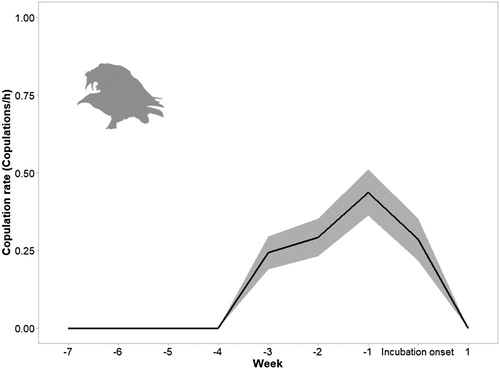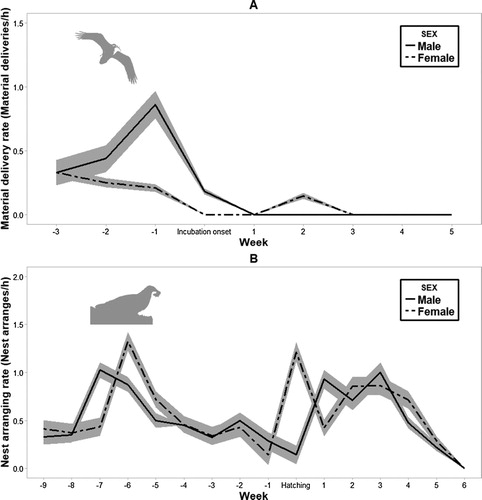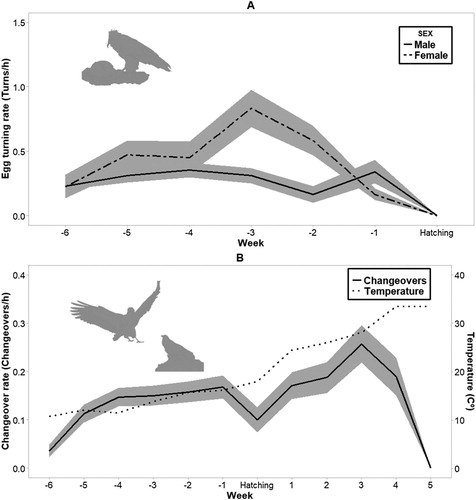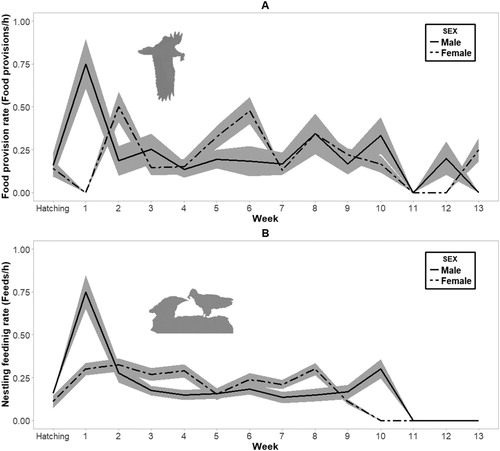Figures & data
Figure 1. Mean rate of copulations per week relative to the onset of incubation (week 0). The shaded area represents ± se.

Figure 2. Mean rate of delivery of material to the nest per week relative to incubation onset (week 0) (A). Mean nest arrangement rate (B) per week in relation to hatching week (week 0). The shaded areas in both graphs represent ± se.

Table 1. Results of the GLMMs for each behaviour recorded in Egyptian Vulture pairs (n = 20) in northern Spain.
Figure 3. Incubation and brooding investment (A) and nest attendance investment (B) per week in relation to hatching date (week 0). Values are expressed as a percentage of time. Shaded areas represent ± se.



